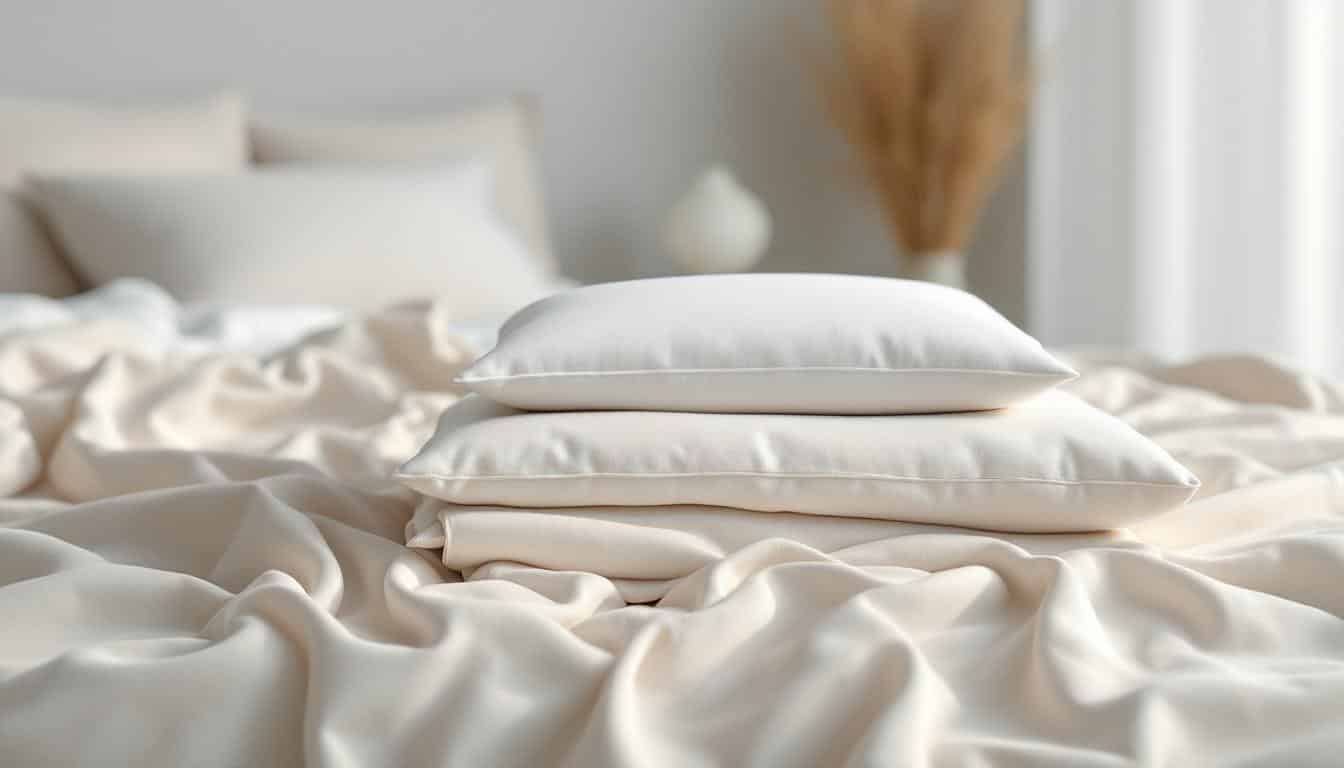Have you ever found yourself lying awake at night, your mind racing and your body tense? You’re not alone. Many people struggle with sleep issues, often driven by the stresses of daily life. Fortunately, deep relaxation techniques offer powerful solutions to calm the mind and prepare the body for a restful night’s sleep. These practices not only alleviate the racing thoughts that keep us awake but also activate the body’s natural relaxation response. By engaging in methods such as diaphragmatic breathing, progressive muscle relaxation, and guided imagery, individuals can unlock the path to deep and restorative slumber. Each technique fosters a state of tranquility, promoting the release of tension held within the body. As we explore these techniques, we’ll uncover how they contribute to improved sleep quality and overall well-being. Embracing these practices not only aids in falling asleep but also cultivates a sense of serenity that can enhance your waking hours. Get ready to dive into the world of relaxation—where peaceful nights and refreshed mornings are within reach!

Table of Contents
ToggleDeep Relaxation Techniques for Sleep: Unlocking Restful Nights
Sleep is the cornerstone of health, yet many face challenges in achieving the restful nights they seek. Recent studies show that around 30% of adults suffer from some form of chronic insomnia, which often stems from high levels of stress and anxiety. This predicament is a call to remember the power of deep relaxation techniques that can ease the mind and prepare the body for sleep.
Understanding how to induce deep relaxation before sleep is crucial. Techniques such as meditation, breathing exercises, and progressive muscle relaxation facilitate a calming environment conducive to falling asleep faster and improving sleep quality. Below, we delve into these techniques, explore their effectiveness, and discuss practical steps to integrate them into your nightly routine.
The Science Behind Deep Relaxation and Sleep
Sleep and relaxation are intricately linked, and recent scientific developments provide a solid foundation for their relationship. For instance, a study published in the Journal of Sleep Research found that deep relaxation techniques like mindfulness meditation reduced insomnia symptoms by 70%. The relief from anxiety, which often clouds our minds, can significantly enhance sleep duration and quality.
Moreover, the National Sleep Foundation emphasizes that relaxation techniques can physically lower the body’s stress response. By activating the parasympathetic nervous system, practices like deep breathing and meditation reduce cortisol levels—this is pivotal since elevated cortisol inhibits the body’s ability to achieve deep sleep.
Statistics are a powerful reminder of the importance of sleep hygiene; the Centers for Disease Control and Prevention (CDC) reports that 35.2% of adults in the U.S. sleep less than the recommended seven hours a night. Inadequate sleep can lead to a cascade of health issues, including obesity, diabetes, and cardiovascular disease. Thus, implementing effective deep relaxation techniques is crucial for better sleep and, subsequently, improved long-term health outcomes.
Practical Deep Relaxation Techniques
1. Breathing Techniques
Breathing is a fundamental practice that many overlook in the quest for calmness at bedtime. Two effective methods include:
– Diaphragmatic Breathing: Also known as belly breathing, this technique engages the diaphragm to increase the efficiency of breath. While lying down, place one hand on your chest and another on your abdomen. Inhale deeply through your nose, allowing your belly to push against your hand, while your chest remains still. Exhale slowly, tightening your abdominal muscles. This technique fosters a sense of tranquility and aids in falling asleep.
– 4-7-8 Breathing: This method requires inhaling through the nose for four seconds, holding the breath for seven seconds, and then exhaling slowly for eight seconds—repeating this cycle several times. Research supports that controlling your breath can lower blood pressure and slow your heart rate, preparing your body for sleep.
2. Visualization Techniques
Visualization, or guided imagery, comprises mental exercises that promote relaxation. For instance, imagine lying on a serene beach, feeling the warmth of the sun, and hearing the sound of the waves gently lapping against the shore. Such imagery invokes a calming response from the brain, easing stress and facilitating sleep.
Additionally, the use of specific mental images related to peaceful environments can effectively relax the mind. The American Psychological Association cites several case studies where patients practicing guided imagery witnessed a notable decline in insomnia symptoms, highlighting the importance of mental wellness as part of the sleep cycle.
3. Progressive Muscle Relaxation
This is an active process that involves tensing and relaxing different muscle groups systematically. Start with your toes, tensing the muscles tightly for five to ten seconds before releasing them and allowing relaxation to wash over that area. Progressively move up your body, including your calves, thighs, abs, and so forth, until you reach your head. Scientific studies have shown a decrease in sleep disturbances among those who regularly practice this technique as opposed to those who do not.
One remarkable study conducted at the University of Massachusetts found that participants who engaged in progressive muscle relaxation reported feeling more rested and less anxious during the daytime, correlating with improved overall sleep quality.
Innovative Approaches to Deep Relaxation
Emerging trends have highlighted additional approaches to foster deep relaxation and, consequently, restorative sleep.
1. Non-Sleep Deep Rest (NSDR)
NSDR is a practice focused on achieving deep rest without falling asleep. Techniques akin to self-hypnosis lead to a highly relaxed state which can promote neuroplasticity and memory retention without crossing over into sleep. Engaging in NSDR before bedtime can act as a powerful tool to unwinding after a long day. Many practitioners report feeling refreshed upon completing a NSDR session, contributing to a sleep-friendly mindset.
2. Incorporating Technology
With advancements in technology, relaxation applications and devices providing guided meditations have grown immensely popular—effectively meeting modern needs for stress management. For example, apps such as Headspace and Calm offer tailored soothing sounds and guided sessions specifically designed for improving sleep. Their effectiveness has been supported by data indicating enhanced sleep quality for frequent users, with many individuals attesting to their transformative impacts on their nightly routines.
3. Herbal and Natural Supplements
Integrating adaptogenic herbs, such as Ashwagandha or Rhodiola, in conjunction with deep relaxation techniques can amplify relaxation effects. These natural supplements help manage stress by balancing cortisol levels, making them effective aids for sleep. Clinical studies consistently show that individuals who use adaptogens coupled with relaxation practices report lower anxiety levels and improved sleep quality.
Furthermore, for more information about using these herbs, please refer to resources like the article on the longevity secrets of adaptogenic mushrooms.
Through establishing a well-rounded regimen that integrates these promising techniques, individuals can pave the way towards improved sleep quality and overall well-being. The key lies in understanding that relaxation is a skill that requires practice and commitment.

“`html
FAQ on Deep Relaxation Techniques for Sleep
Q: What are deep relaxation techniques for sleep?
R: Deep relaxation techniques are methods designed to help the body and mind achieve a state of calmness and tranquility, which can aid in falling asleep and improving sleep quality.
Q: How do breathing exercises help with sleep?
R: Breathing exercises, such as diaphragmatic and 4-7-8 breathing, engage the body’s relaxation response, reducing stress and promoting a sense of calm necessary for sleep.
Q: What is a body scan, and how can it benefit sleep?
R: A body scan is a type of meditation that involves focusing attention on different body parts to acknowledge tension and release it, ultimately helping the mind to relax and prepare for sleep.
Q: Can visualization exercises improve sleep quality?
R: Yes! Visualization exercises leverage mental imagery to create positive sensations in the body, diminishing stress and facilitating the transition into a restful sleep state.
Q: How does progressive muscle relaxation work?
R: Progressive muscle relaxation involves systematically tensing and relaxing different muscle groups, which helps to release physical tension and promotes relaxation throughout the body, enhancing sleep.
Q: What is yoga nidra, and how does it contribute to better sleep?
R: Yoga nidra is a meditative practice that guides practitioners into a deeply relaxed state, often leading to improved sleep quality through focused relaxation and mental imagery.
Q: How can non-sleep deep rest (NSDR) be beneficial?
R: Non-sleep deep rest (NSDR) allows individuals to achieve a state of deep relaxation while still awake, helping to restore energy and enhance overall mental well-being, which can improve sleep.
Q: Why is it important to maintain good sleep hygiene along with relaxation techniques?
R: Good sleep hygiene, such as having a consistent sleep schedule and creating an ideal sleep environment, complements relaxation techniques and enhances their effectiveness in promoting sound sleep.





